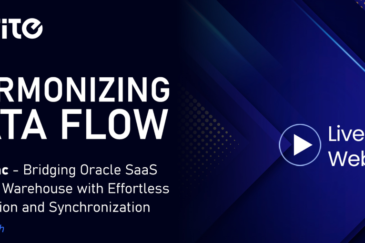What’s the Importance of Reconciliation in Data Migration?

- August 24, 2023
- Jhansi Rani
- 0
Data reconciliation refers to comparing and aligning data between two sources to identify discrepancies, inconsistencies, or errors. It ensures that data remains accurate, complete, and consistent as transferred from one system to another. Data reconciliation involves meticulously validating data records, structures, and attributes to verify that they match across different systems or datasets. Any disparities discovered during the reconciliation process are then rectified, ensuring the migrated data remains reliable, trustworthy, and fit for its intended use. Data reconciliation offers several key benefits, including:
Data Integrity
Business Continuity
The smooth functioning of business processes depends on accurate and dependable data. Reconciliation ensures business continuity by conducting thorough checks on migrated data to verify it aligns with the source data. By identifying and resolving discrepancies early, reconciliation prevents disruptions that could arise from using flawed data, safeguarding operational efficiency and consistent service delivery. Data migration solutions uphold business continuity by identifying and rectifying discrepancies that might disrupt operations.
Compliance and Auditing
Many industries are subject to stringent data management, retention, and accuracy regulations. Reconciliation facilitates auditing and compliance efforts by validating that data has been accurately migrated. This substantiates an organization’s ability to maintain accurate records, adhere to regulatory standards, provide a reliable audit trail for authorities, and lower the risk of non-compliance penalties. Data migration solutions help organizations adhere to regulatory compliance standards by ensuring accurate and auditable data transfers.
Data Quality
Risk Mitigation
Data migration involves inherent risks such as data loss, corruption, and unauthorized access. Reconciliation acts as a risk mitigation strategy by working as a safety net that identifies discrepancies between source and target data, flagging potential data integrity breaches or unauthorized modifications. By identifying issues early on, organizations can take corrective actions to prevent these risks from impacting the business, ensuring the security and integrity of their data assets. Data migration solutions enhance risk mitigation, enabling error detection and correction before significant problems arise.
Decision-Making
Only accurate or consistent data can lead to correct decisions that affect an organization’s operations and strategy. Reconciliation supports effective decision-making by confirming that migrated data aligns with the source, enabling businesses to base their decisions on reliable information. Accurate and consistent data supported by reconciliation contributes to informed decision-making, leading to better outcomes. Data-driven decision-making benefits from accurate data enabled by reconciliation through data migration solutions.
Data Consistency
Data migration often involves transferring data between different systems, databases, or formats, which can introduce inconsistencies and disparities. Reconciliation maintains data consistency by comparing and aligning data across these varied environments, ensuring that the semantics and meaning of the data remain intact. This enables smooth data integration across platforms and prevents confusion or misinterpretation caused by data discrepancies. Data migration solutions play a role in maintaining data consistency across diverse systems or databases during migration.
User Confidence
The credibility of an organization’s data directly impacts users’ confidence in its systems and processes. Reconciliation fosters user confidence by validating that migrated data is accurate, reliable, and consistent. This reassures employees, customers, and partners that the information they interact with is trustworthy, fostering a sense of reliability in the organization’s operations and enhancing relationships. Data migration solutions that validate accuracy and reliability boost users’ confidence in migrated data.
Efficiency and Productivity
Resolving data discrepancies manually can be time-consuming and resource-intensive. Reconciliation enhances efficiency and productivity by automating identifying and addressing disparities, minimizing the need for manual intervention. This streamlines data migration workflows, reduces operational bottlenecks, and allows teams to focus on more value-added tasks, ultimately contributing to improved overall efficiency and productivity within the organization. Data migration solutions streamline processes, reducing manual interventions and enhancing efficiency and productivity.
Data Maintenance
Reconciliation establishes a solid foundation for future data maintenance by creating a baseline comparison between the source and target data. This baseline is a reference point for detecting changes, anomalies, or errors that might arise over time. Organizations can promptly identify and address data discrepancies by setting up procedures for regular reconciliation checks, ensuring that the data remains consistent, accurate, and relevant in the long term. This proactive approach reduces the risk of data degradation and helps maintain the quality of the migrated data assets, supporting informed decision-making and operational excellence. Data migration solutions can lay a solid foundation for future data maintenance by ensuring accuracy and consistency post-migration.
Oracle Cloud Data Migration Tools
Data migration tools play an important role within cloud data migration services by facilitating seamless and efficient data transfer from on-premises or legacy systems to cloud environments, ensuring minimal disruptions, and preserving data integrity. Oracle Cloud data migration tools are designed to simplify moving data from on-premises systems or other cloud platforms to Oracle Cloud environments. These tools provide comprehensive data transfer, transformation, and validation solutions, ensuring a smooth migration while minimizing disruptions to business operations.
With ConvertRite, there will be no concern about streamlining the migration of legacy applications to the cloud. This secure and HIPAA-compliant Oracle Data Migration Tool automates manual and error-prone tasks like data mapping and validation, thus speeding up migrating data from legacy systems to Oracle Cloud. It also take care of data extraction, transformation, error reporting, and reconciliations, ensuring seamless and up-to-date data integration with Oracle Cloud.

Services
Products
Company
Copyright © 2024 Rite Software Solutions & Services LLP. All rights reserved.



